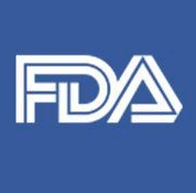One Year Later, Federal Plan on Tobacco Harm Reduction Needs Improvement

 The Food and Drug Administration has failed to approve a single reduced-harm nicotine product in the past year, despite unveiling a new “roadmap” in July 2017 that emphasized the role such products can play a reducing tobacco-related illness. That lapse does a huge disservice to millions of smokers who could benefit from switching from cigarettes to a far less harmful product.
The Food and Drug Administration has failed to approve a single reduced-harm nicotine product in the past year, despite unveiling a new “roadmap” in July 2017 that emphasized the role such products can play a reducing tobacco-related illness. That lapse does a huge disservice to millions of smokers who could benefit from switching from cigarettes to a far less harmful product.
A year ago, the FDA claimed it would balance regulation against encouraging the development of harm-reducing products. But with each passing week it’s become clear that the biggest roadblock on the path to tobacco harm reduction is the agency’s own cumbersome product approval process.
Within the FDA’s press announcement, there were two notable passages:
A key piece of the FDA’s approach is demonstrating a greater awareness that nicotine—while highly addictive—is delivered through products that represent a continuum of risk and is most harmful when delivered through smoke particles in combustible cigarettes…
The FDA is committed to encouraging innovations that have the potential to make a notable public health difference and inform policies and efforts that will best protect kids and help smokers quit cigarettes.
It seemed like the FDA had recognized a fact tobacco researchers have known for decades. As Michael Russell, a founders of tobacco harm-reduction theory, put it succinctly in 1976, “people smoke for the nicotine but they die from the tar.”
It could be so easy for the FDA to encourage the development of less harmful nicotine products for smokers. The market, all on its own, already provided alternatives in the form of e-cigarettes, smokeless tobacco, and heat-not-burn devices. All that is needed to make these products available and viable as smoking cessation tools is for the FDA to establish a regulatory structure that makes it easier and cheaper for manufacturers to earn FDA approval to sell the products and advertise them as reduced risk (compared to smoking).
But the FDA seems to have done nothing to reform its pre-market tobacco approval gauntlet. Over the last two years, the agency has received 367 premarket tobacco applications, which are required for the products to be sold legally in the U.S. None have been approved. The agency has also received 35 Modified Risk Tobacco Product applications (MRTP), which would allow tobacco products to be advertised as lower risk. The agency has not approved any such application, ever.
For example, Philip Morris submitted a MRTP almost two years ago seeking FDA approval for its product, IQOS. IQOS is a device that heats tobacco instead of burning. It is already gaining popularity in other countries and decreasing the use of combustible tobacco. In Japan, IQOS took over five percent of tobacco sales by 2016. By the following October, IQOS had captured 13 percent of all tobacco product sales in that country. All the evidence indicates heat-not-burn products are significantly less harmful to smokers than traditional cigarettes, so the trend in Japan should be viewed as a good development and one to emulate. Yet, despite the agency’s claim that MRTPs should take about 360 days, it has yet to approve the device for sale.
Snus, a moist tobacco powder similar to chewing tobacco, helped Sweden get its smoking rate down to just five percent. That’s lower (by far) than any other EU nation and the U.S. As a result, Sweden also enjoys one of the lowest incidence of lung cancer and oral cancers in the European Union.
While snus can legally be sold in the U.S., it cannot advertise itself as being lower risk than smoking which, by virtue of not involving combustion, it is. Consequently, American consumers see little reason to switch from smoking to smokeless tobacco. So far, FDA has considered MRTPs from several snus companies, including Swedish Match which submitted an application in 2014 and was denied two and half years later. Currently, R.J. Reynolds, which submitted an MRTP in March 2017, is still waiting on a decision from the FDA.
Instead of making sure these innovative reduced-risk products make it market and can advertise the fact that they are reduced-risk, the FDA has put its energies on a fear-campaign intended to scare teens away from e-cigs. The agency has done this despite the fact that annual survey data from the Centers for Disease Control and Prevention (CDC) shows that e-cig use among youngsters has declined by 30 percent since 2015.
Unfortunately, every time the agency advertises that e-cigarettes might not be safe for children, the media and the public hear only the message that e-cigarettes are dangerous. Whether intentionally or not, the messaging aimed at youth affects the perceptions of the entire public, including adult smokers. By excluding or downplaying the benefits switching from smoking to vaping may have for adult smokers, the FDA is changing the likelihood that adult smokers will even try to quit via e-cigarettes. As polling results show, more and more adults—including smokers—now incorrectly believe that e-cigarettes are as harmful as or even more harmful than traditional cigarettes.
In an August 23 tweet, FDA Commissioner Scott Gottlieb said that he was “dismayed by how many advocates of vaping criticize FDA’s efforts to keep e-cigs out of the hands of kids.” Predictably, this was followed by a flurry of responses from consumers, policy wonks, and members of the industry correcting the commissioner that they have no opposition to FDA using its enforcement powers to prevent illegal tobacco sales to minors. Rather, the issue is that the agency has focused on reducing youth vaping to the exclusion of all other goals, including reducing adult smoking.
Nobody wants non-smoking teenagers to initiate the use of nicotine. But, if reducing teen vaping by two percent comes at the opportunity cost of fewer adults quitting smoking, is it worth it? For anti-tobacco zealots, the answer is “yes” because achieving that goal warrants any means necessary. Tell that to families caring for sick smokers and those who have lost loved ones to that public health scourge. But, unfortunately, over the last year it seems the FDA has allowed its policies to be led by zealots.
If Scott Gottlieb truly wants to improve public health, he cannot afford to be as myopic as the activists who focus only on the children. He must do as he promised and balance enforcement aimed at stopping teen initiation of nicotine use against actions aimed at encouraging adult smokers to quit. Legalizing some of the many reduced-risk alternatives to cigarettes and giving smokers a choice would be a good place to start.